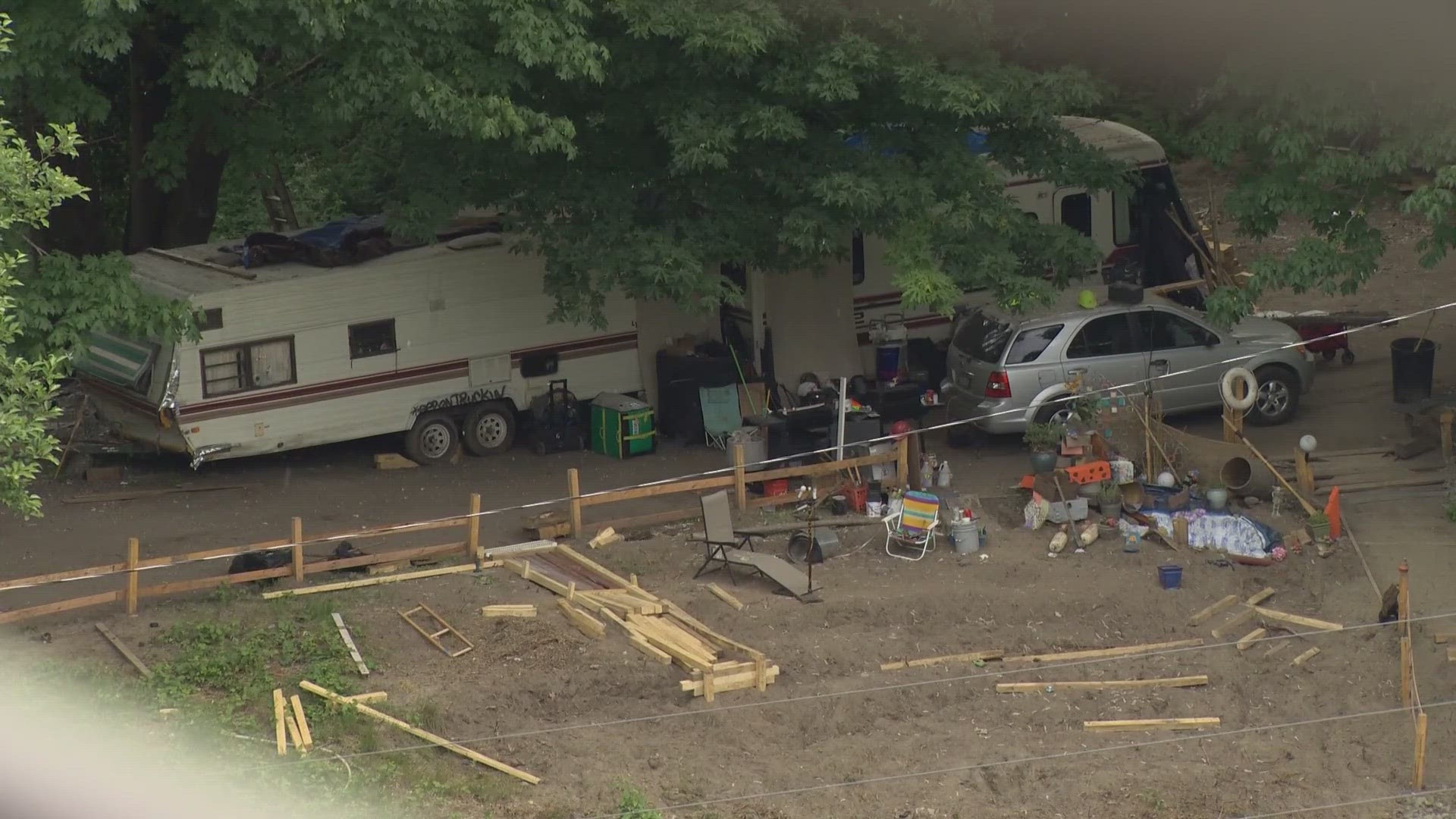SEATTLE — A homeless encampment in south Seattle remains uncleared, drawing urgent calls for action. People who live near the site say one of the worst fears happened Tuesday night when one person died.
I predicted this months and months ago," Diane Radischat, president of her senior living community association at SHAG Arrowhead Gardens, said. " That's why I'm angry. It's exactly why I'm angry."
RELATED: Seattle senior living community at the crossroads of homelessness crisis
Seattle police are investigating the death as a possible homicide. The encampment sits along Myers Way near the Seattle/White Center line. Radischat believes this death was preventable if local and state agencies had stepped in when they began complaining months ago.
"We have as much concern for their safety and their welfare as we have for our own," she said. "We're criticizing the situation. We're not criticizing the humans. Those are two different things."
KING 5 reached out to the City of Seattle, the King County Regional Homelessness Authority, and the Washington Department of Transportation. Each provided us with emailed responses:
City of Seattle
"The site at Myers Way is a multi-jurisdictional encampment and resolution of the site requires a multi-jurisdictional effort. Outreach services and shelter referrals for WSDOT sites are coordinated by the King County Regional Homelessness Authority (KCRHA), not the City. KCRHA is an independent agency charged with unifying and coordinating homelessness response with the City of Seattle and across King County.
The City’s Unified Care Team has been in contact with WSDOT to elevate the site for resolution, and the UCT is onsite providing litter picks and trash mitigation at this site several times a week. We are prepared to engage in resolution activities pending a response from our WSDOT partners. This site has been near the top of the priority list for multi-jurisdictional sites for several months; however, the site has an extremely challenging topography with heavy soil saturation levels. Site removal planning requires an in-depth safety plan that take into consideration run-off areas, soil saturation levels that affect use of heavy machinery used in site removals, and land inclines and soil shifting."
WSDOT
"First, we would defer to Seattle PD and law enforcement regarding last night’s reported incident and subsequent investigation. Anyone with concerns about an immediate threat of violence should call 911.
As you noted, our crews are aware of this site. Homelessness is a complex issue with no easy solutions that requires a coordinated approach for the safety of those who are in need, nearby residents, the traveling public and our workers who must access sites for inspections and repairs. In addition, access to resources that can make a difference are key in outreach to people living on right of ways or roadsides. We work closely with local partners, who have access to the resources and human services required to provide a pathway to temporary and permanent housing. There are four actions that allow encampments to be removed from WSDOT right of way:
- The offering of shelter and services to people living there
- Storage of their belongings
- Safety and security for people on site and work crews
- Restoration and cleanup of the property
WSDOT’s responsibility and expertise is limited to the last action, the clean-up of right of way. As such we must rely on our partnerships with local jurisdictions, law enforcement and social services when addressing any area with an encampment. And, the overarching need is for creation of safe, secure housing options for people experiencing homelessness, which is well beyond the expertise, ability or funding of a transportation agency. We do engage our partners when there is an immediate safety threat at a particular encampment on our right of way, but given the number of encampments and our limited resources, we are unable to address all of them with the care, compassion and resources such work requires."
King County Regional Homelessness Authority
"KCRHA is not a law enforcement agency. Anyone who is concerned about an immediate threat of violence should call 911.
It also important to remember that people experiencing homelessness are often the victims of crime and violence—which is one of the many reasons why it’s so urgent to increase access to housing and shelter so that people can move inside to a safe place to live.
Outreach providers have been present at that site regularly, but again, outreach workers support basic needs and provide connection to services; they are not law enforcement officers and do not patrol.
The fact is that homelessness is a housing problem, and our region hasn’t kept up in meeting the need for either shelter or affordable housing. Additional resources and community support for more safe places for people to live—in every city and every neighborhood—is the key to solving homelessness."
KING 5 has reached out to all three of these entities to see if they can provide a clear timeline on when those living in the encampment can be provided resources/services so clean up can start.

